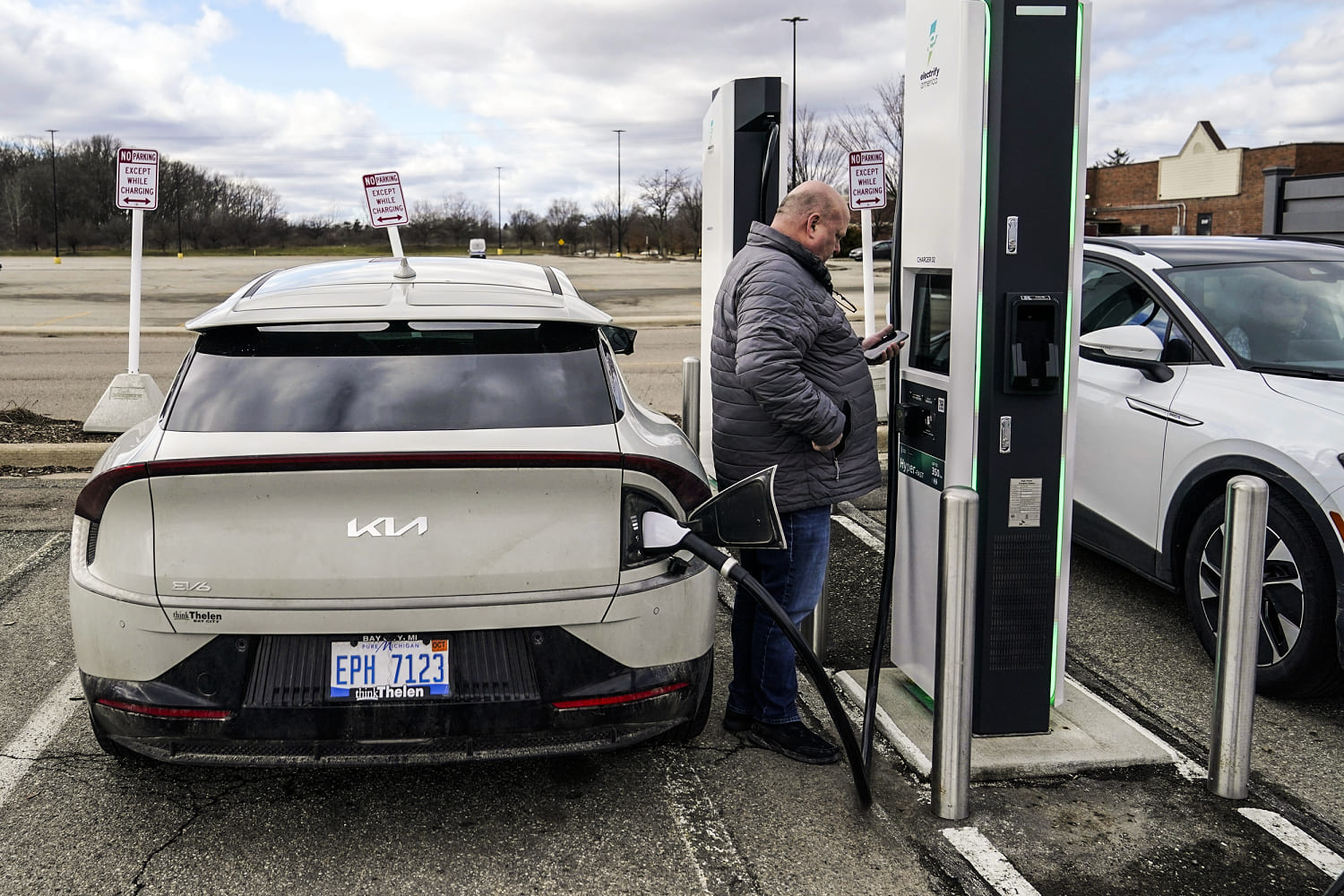
President Donald Trump suggested over the weekend that consumers could dodge his sweeping 25% tariffs on foreign vehicles and auto parts by buying cars made entirely in the United States. The only problem: There aren’t any.
“If you make your car in the United States, you’re going to make a lot of money,” he told NBC News in an interview Saturday. “If you don’t, you’re going to have to probably come to the United States, because if you make your car in the United States, there is no tariff.”
Trump, who is set to announce a new tranche of broad-based tariffs Wednesday, said he “couldn’t care less” if automakers raise prices to offset the costs of the import taxes and denied recent reporting that he’d threatened industry executives not to do so.
Even U.S.-assembled automobiles by major American brands rely heavily on complex global supply chains for the roughly 30,000 parts that make up the average car. Overall, the percentage of auto parts that are sourced abroad hovers around 40%, said Dan Ives, the global head of technology research at Wedbush Securities, a financial services firm.
“U.S.-made cars with all U.S. parts is a fictional tale,” Ives said.
Ivan Drury, director of insights at Edmunds, put it no less bluntly, telling NBC News this month, “There’s no vehicle where every single component is manufactured from the ground up in the United States.”
A senior automotive executive, who asked to speak anonymously to avoid disrupting sensitive negotiations with the Trump administration, expressed concerns about the industry’s ability to adapt to tariffs because of manufacturers’ extensive supply chains abroad. Even though many vehicles — both American and foreign — are assembled domestically, they’re built using lots of parts that aren’t made in U.S. factories.
A White House spokesperson didn’t immediately respond to a request for comment.
Consumers could see price hikes of $4,000 to $12,500 per car, depending on the vehicle, according to a recent estimate by Anderson Economic Group, a consultancy that has worked for major automakers.
Automakers are required by law to report the makeup of their car models to the National Highway Traffic Safety Administration, which publishes a list each year. The report, mandated by the American Automobile Labeling Act, includes the percentage of parts that are sourced outside the United States and Canada, as well as the country of final assembly and the source of the vehicle’s motor and transmission. Drury said the list can be a handy guide for shoppers looking to see how exposed to tariffs a given model might be.
The 2025 Kia EV6, for example, is made of 80% U.S. and Canadian parts, according to the NHTSA’s list, making the South Korean vehicle one of the most North American-made of any global automaker. Most other models have far lower percentages of U.S. and Canadian parts, though the law doesn’t require automakers to differentiate between components sourced in the United States and those from Canada — potentially limiting the list’s utility to shoppers, given Canada might face blanket tariffs of up to 25% on most goods as soon as Wednesday.
Even Tesla, which is run by multibillionaire Trump adviser Elon Musk and assembles its vehicles in the United States, sources 20% to 25% of its parts from Mexico, according to the NHTSA list. Over 175 models from foreign automakers like Toyota, Volvo and BMW — many of which also build some vehicles in the United States — are made entirely abroad.
Automotive supply chains are robust, but they can also be fragile when there are shocks to the system, said Amy Broglin-Peterson, a supply chain expert at the Broad College of Business at Michigan State University. For decades, U.S. companies have offshored parts of their manufacturing operations, relying on factories in China, Mexico and other countries where labor is cheaper.
Any tariffs on those foreign-made parts could add up, she said, especially within North America, where manufacturing is relatively integrated and items cross borders multiple times.
“I actually see the parts tariffs to be more of a risk factor than a finished vehicle tariff,” Broglin-Peterson said.
Moving more of automakers’ supply chains to the United States is possible, she said, and it could achieve the Trump administration’s national security goals while bolstering domestic manufacturing in the long run. But that could take years.
“Establishing a presence here, from a manufacturing perspective, is not a short order,” she said. “It comes with a very lengthy timeline. It comes with a heavy cost.”








